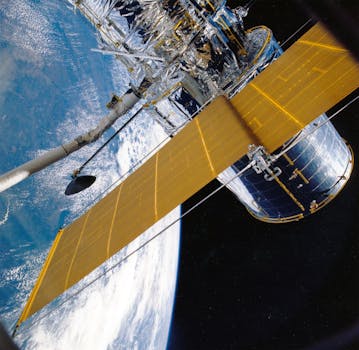
Future of Satellites: Revolutionizing Global Connectivity
The future of satellites is rapidly evolving, with advancements in space technology and increasing demand for global connectivity. Satellites have been a crucial part of modern telecommunications, providing internet access, navigation, and weather forecasting services. As the world becomes increasingly dependent on satellite technology, the industry is witnessing significant investments and innovations.
One of the most significant trends in the satellite industry is the development of small satellites, also known as CubeSats. These tiny satellites are smaller, cheaper, and more efficient than traditional satellites, making them an attractive option for companies and governments looking to launch their own satellite constellations. Small satellites are being used for a variety of applications, including Earth observation, communication, and navigation.
Another area of innovation in the satellite industry is the development of reusable launch vehicles. Companies like SpaceX and Blue Origin are leading the charge in this area, with their reusable rockets capable of launching satellites into orbit and then returning to Earth for refurbishment and reuse. This technology has the potential to significantly reduce the cost of launching satellites, making space more accessible to a wider range of companies and governments.
The use of satellites for internet connectivity is another area of significant growth. Companies like OneWeb and Amazon’s Kuiper Systems are launching constellations of satellites into low-Earth orbit, with the goal of providing high-speed internet access to remote and underserved communities around the world. These satellite constellations have the potential to bridge the digital divide, providing internet access to millions of people who currently lack it.
In addition to internet connectivity, satellites are also being used for a variety of other applications, including Earth observation, navigation, and weather forecasting. Satellites like the European Space Agency’s Copernicus program are providing high-resolution images of the Earth, which are being used for applications such as environmental monitoring, disaster response, and urban planning.
The future of satellites is not without its challenges, however. One of the most significant concerns is the growing problem of space debris. As more satellites are launched into orbit, the risk of collisions and other accidents increases, potentially causing significant damage to operational satellites and even the International Space Station. To address this issue, companies and governments are working on developing sustainable practices for satellite launches and operations, including the use of de-orbiting technology and responsible disposal of satellites at the end of their lifespan.
Despite these challenges, the future of satellites looks bright. With advancements in technology and increasing demand for global connectivity, the satellite industry is poised for significant growth and innovation in the coming years. As the world becomes increasingly dependent on satellite technology, it is likely that we will see new and exciting developments in the satellite industry, from small satellites to reusable launch vehicles and beyond.






